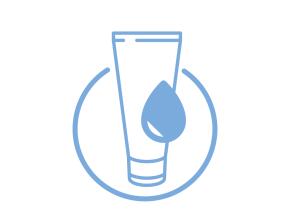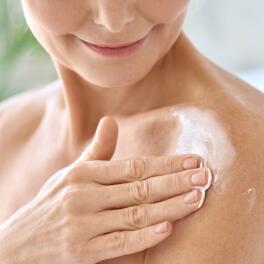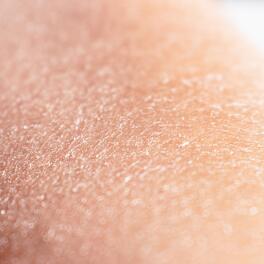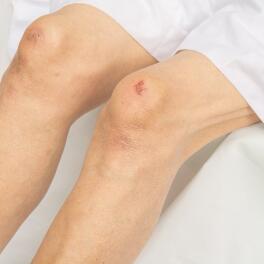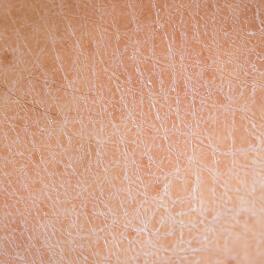Dry or dehydrated skin: what is the difference?
Rough or tight skin after a shower or in winter... Almost everyone has experienced this discomfort at least once in their life and has concluded that they have dry skin... But this is not necessarily the case... It may be dehydrated... What are the characteristics of dry skin? And what about dehydrated skin? How do you take care of the latter?
What is dry skin?
Dry skin, known as xerosis in medical terms, is a type of skin that, clinically, manifests itself as rough skin, that feels coarse to the touch. It is accompanied bydiscomfort, tightness and sometimes even itching1. It is, therefore, a skin type in the same way as oily or combination skin. It is a permanent state.
Dry skin is explained by a change in the physiological characteristics of the structure of the superficial layer of the epidermis, the stratum corneum2. These changes include a decrease in the production of the lipids that make up the hydrolipidic film. The latter limits the elimination of water contained in the dermis and, therefore, maintains the skin's hydration1. For more information on dry skin, its causes, its treatment, etc. you can consult our page on xerosis.
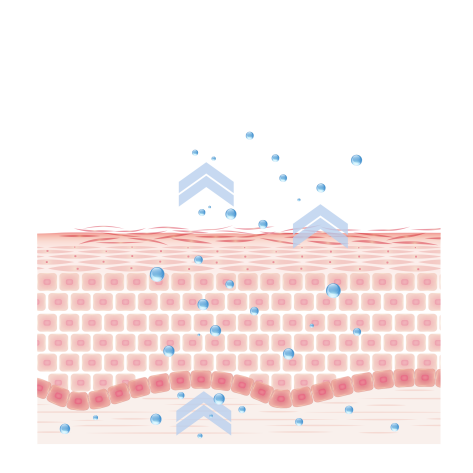
Dry skin requires specific care and, in particular, the use of ultra-rich cleansing products and the daily application of an emollient, which helps restore the skin's barrier function. You can find all our tips for caring for dry skin on our xerosis page3.

What is dehydrated skin?
Dehydrated skin is a condition that occurs when there is a lack of water in the skin. This can happen to anyone, regardless of skin type: people with oily or combination skin can also suffer from skin dehydration4. It is, therefore, not a skin type but a skin condition, which is transient.
Water is vital to the skin
It is important to know that the dermis, the middle layer of the skin (located between the epidermis and the hypodermis) is composed of more than 70% water5. The epidermis feeds from the dermis, drawing nutrients from the blood to generate new cells. When the dermis does not contain enough water, its connective tissue including collagen and elastin can no longer fulfil its function of structure and volume of the skin. A dehydrated dermal layer leads to reversibly dull skin6.

Dehydrated skin, therefore, looks dull, lacklustre and can also show premature signs of ageing, such as surface wrinkles and loss of elasticity. Dark circles around the eyes are often more pronounced3. The skin can also feel tight in localised areas.
Dehydrated skin can be caused by a multitude of factors3:
- Stress and/or fatigue
- The climate (cold, wind, UV rays, etc.)
- Tobacco and alcohol
- Some dermocosmetic products that may be too aggressive
- Some treatments such as medicines used to fight acne
Factors that can cause skin dehydration
Stress/fatigue
Some dermocosmetic products
How can you combat skin dehydration?
Unlike dry skin, skin dehydration can be treated by lifestyle changes. The first step is to make sure you drink enough during the day. You should drink 1. 5 L of water per day 3.
Depending on individual circumstances, you should also combat the factors mentioned above3 :
- Fight stress, get enough sleep
- Protect your skin from climatic aggressors
- Limit or even stop smoking and alcohol consumption
- Use suitable cleansing and care products without soap, fragrance, parabens and skin irritants
Our recommendations for combating skin dehydration
Getting enough sleep
Protect your skin from climatic aggressors
Use appropriate cleansing and care products
Are you familiar with the effectiveness of DEXERYL Emollient Cream in treating your condition?
DEXERYL Emollient Cream provides patients with proven clinical studies.
DEXERYL Emollient Cream: the partner for dry skin
The basis for treating xerosis is, above all, moisturising the skin and appropriate hygiene.
DEXERYL supports you with emollient skin care and cleansers specially formulated for dry skin and recommended for treating signs of skin dryness (xerosis).

DEXERYL Emollient Cream
DEXERYL Emollient Cream can be used to protect the skin and treat the signs and symptoms of dry skin:
- glycerol for its hydrating action
- vaseline and paraffin for their protective role

Dexeryl supports you each day
Sources:
- https://www.uspharmacist.com/article/xerosis-treating-clinically-dry-skin
- https://www.lissa.fr/rep/articles/11976541
- https://www.healthline.com/health/dehydrated-skin
- https://www.healthline.com/health/xerosis#prevention
- C. Téllez-Soto, M. Pereira Silva et al. : In vivo determination of dermal water content in chronological skin aging by confocal Raman spectroscopy; Vibrational Spectroscopy Volume 112, January 2021
- https://www.sedermatologyspecialists.com/blog/what-does-water-really-do-for-the-skin




